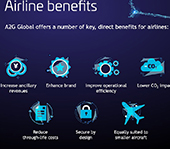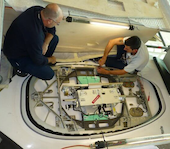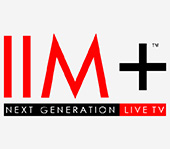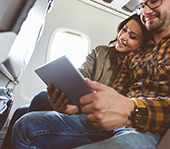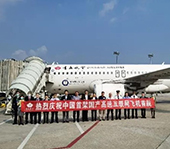SkyFive emerges with ATG proposition featuring local telcos
Connected aircraft show potential gains in market share worth US$33 billion
Uncovering Trends In Media Content Across TV And Digital
An Innovative New Normal
David Flexer of Inflight Motion Pictures once recounted to Life magazine that he was on a transcontinental flight in 1956 when he realised “air travel is the most advanced form of transportation and the most boring.” Flexer later developed the 16mm film system for commercial aircraft, a launchpad for a meteoric change in our industry. At the turn of the century the focus seemed mainly on quantity as airlines raced to offer more content than their competitors. In 2020, the Coronavirus pandemic has given us the opportunity to reconsider our industry and the role we play and readdress the decades old question – just how boring is it?
It was the turn of the century when Boeing launched Connexion, the first high speed internet connection inflight. In the two decades since, many airlines began to offer internet connectivity but often it feels like a slow wave from the first row of the aircraft to the last. In a 2019 Sky High Economics Report the industry was warned of an “immediate need” to innovate. In our region, they reminded us that this next decade will see “the first truly digitally native generation become the largest group of air passengers of over 450 million.” The report further explained that the digital disruption we have seen on the ground is now “driving expectations of the inflight experience and redefining attitudes to airline loyalty.” When we examine what exactly these expectations are, it is helpful to consider a 2019 Content Ratings Benchmarks report where Nielsen found that Live TV continues to be the largest contributor to time spent on media content on the ground. Further, a study commissioned by the BBC Global News that same year confirmed that 62 percent of passengers were more likely to choose an airline if it had Live TV with a third willing to pay up to 20 percent more for the privilege.
If we know the growing expectation of our customers and we have the technology, what is preventing airlines and content providers from the innovation that David Flexer demanded back in 1956? The answer is simple: cost.
Increasingly our client experience has been that airlines are fully aware of their passenger’s expectations. We’ve all delayed boarding a plane as long as possible in the hope of watching the last minutes of a game, catching the result of an election or witnessing breaking news. We’ve cancelled flights when our team made the final and we have relied on the kindness of pilots and cabin crew to keep us updated on the score. So, while the world stood still in 2020, we listened to the market and put the finishing touches on IIM+. This innovative and patented signalling server technology allows multicast streaming onboard without the need to install additional hardware or software. It is convenient, affordable and flexible. IIM+ will enable airlines to meet this “immediate need” to innovate, revolutionising Live TV inflight at an extraordinary bandwidth saving of 75 to 90 percent. With IIM+ Live TV has potentially become the most economically viable option to entertain passengers.
The Coronavirus pandemic has been devastating for the industry but history will define it as an impetus for change. When the skies re-open, passengers will notice which airlines took the time to reinvent themselves, to rise above their competition and to entertain like never before – “boring” cannot be the new normal. While 2020 has taken so much from so many it is important to look forward. In 2021 Tokyo will finally host their long-awaited Olympics and Paralympics, Roger Federer or Rafael Nadal may play their last Grand Slam and England may finally win the Euro. This year has also seen us tune into live news like never before, to monitor travel updates, check the market and tune in to watch world leaders speak. This momentum, these habits, will not stop when the skies reopen, passengers will not be content to miss anything, anymore. Our vision is for IIM+ to enable new carriers to launch with Live TV as their primary entertainment medium – less hardware, less fuel, less cost and less environmental impact. Existing carriers can meet this Live TV demand with savings, not costs. Trans-Tasman flights could focus on rugby, cricket and live news while their Northern Hemisphere counterparts tune in to football and tennis. Superbowl parties take to the skies. Programming with IIM+ is destination specific and more relevant than ever before. Generation Z passengers can enjoy their Live TV on their personal devices while the Millennials may continue to enjoy in seat convenience. Live TV was seen as expendable at the beginning of the shutdowns but now it should be seen as the solution to a healthy, zero-touch, dynamic and exciting inflight experience that could revolutionize an industry and satisfy consumer demand simultaneously.
The changes we have seen in 2020 will have repercussions for years to come – it is only with innovation and adaptation that we will survive and thrive. IIM+ provides a convenient, affordable and flexible Live TV solution for airlines. The game has changed and with IIM+ the new normal will be far from boring.
Global Online Content Consumption Doubled In 2020
Deutsche Telekom Customers Offered Free Gx Aviation On Lufthansa Group Flights
Much has been written about the merits of airlines adopting a free-of-charge model for their passenger inflight broadband offerings in recent months, with an Inmarsat white paper suggesting such a move could lead to take-up rates of between 30-40%.
The number of airlines offering complimentary Wi-Fi on flights also seems to be on the rise. The latest example comes from Germany, where Deutsche Telekom has just announced that its residential customers will be offered free inflight broadband, powered by Inmarsat’s award-winning GX Aviation solution, on all domestic, short and medium haul flights operated by Lufthansa Group.
The offer was actually introduced towards the end of April 2020 to keep Lufthansa, Eurowings and Austrian Airlines passengers connected in the wake of COVID-19. It has now been extended until the end of 2021.
“According to a Bitkom survey, every other German would like to surf the Internet free-of-charge onboard an airplane,” says Hagen Rickmann, Board Member Business Customers at Deutsche Telekom. “We are now responding to this request and expanding our Wi-Fi offering on the plane. From now on, private customers can also surf free of charge on European flights of the Lufthansa Group.”
This latest move with Lufthansa Group shines a light on efforts by Inmarsat and its partner Deutsche Telekom to increase inflight connectivity take-up rates for airline customers. According to Asbjorn Christoffersen, Inmarsat Aviation’s Vice President of Retail Revenue Management, there are two fundamental barriers that need to be overcome to unlock the full potential of IFC: ease of access and a lower pricing.
One of the ways that Inmarsat and Deutsche Telekom are helping airlines to overcome such barriers is enabling advanced roaming services, allowing subscribers of mobile network operators and Wi-Fi service providers to automatically access the inflight Wi-Fi service. The latest news with Lufthansa Group is a prime example.
“The simplicity of a plug-and play experience is the key reason why 40% of mobile subscribers in Europe actively use cellular roaming services when abroad. We now have the technology to fully emulate that cellular roaming experience on a flight. Merely turn on your smartphone and start using the inflight Wi-Fi services,” explains Christoffersen. “Starting with mobile app based roaming – using the WISPr technology – we’ll expect to rapidly transition to fully automated cellular style roaming using Passpoint technology.”
Christoffersen clarifies that passengers are billed via their regular mobile network subscription and that many roaming partners will in fact choose to bundle the inflight pricing into the subscriber’s regular monthly subscription fee.
As part of the campaign with Lufthansa Group, Deutsche Telekom customers with a Magenta Mobil M tariff or higher can book the ‘Inflight Europa Flat’ Wi-Fi free of charge. For business customers, the flat rate is now also available free of charge from the Business Mobil M rate onwards. The tariff option is simply booked before the journey starts. The offer also applies to business customers of Magyar Telekom, Hrvatski Telekom, Slovak Telekom and T-Mobile Czech Republic, who use the One App instead of Deutsche Telekom’s Connect App.
The offer of free GX Aviation inflight broadband will be communicated via onboard announcements. Passengers can either login onto the connectivity service manually (via the portal of the respective airline) or through Deutsche Telekom’s Connect App. GX Aviation is available as soon as cruising altitude is reached. The app then automatically displays the available Wi-Fi and asks whether a connection should be established.
The move is bound to be well received by passengers and enhance loyalty for the Lufthansa Group. “As airlines look towards recovery from the COVID-19 downturn and how they can draw passengers and gain an edge against competitors, they should not forget inflight Wi-Fi as a market differentiator – and importantly the power of ‘free’,” wrote Inmarsat Aviation Senior Vice President Niels Steenstrup in a recent blog for Aircraft Interiors International.
“In our daily lives, free internet access has for some time been an absolute expectation. More and more passengers are now expecting that same level of connectivity in the sky. This trend is intensified by the growing influence of digitally native consumers like Generation Z, which will become the largest group of passengers within the next decade,” he added.
